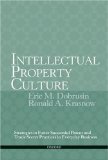In another blow against late claiming, the Court of Appeals for the Federal Circuit denied an appeal from a re-examination because the patent applicants “could have filed the present claims” earlier in the application. Although I suspect the court was just ticked off because the applicants appeared to be gaming the system – the reexamination involved a patent that claimed priority through various continuations dating back to 1954 — it sure makes for awfully murky law.
Basell Poliolefine Italia, S.P.A. appealed decisions of the U.S. Patent and Trademark Office Board of Patent Appeals and Interferences stemming from a Director-ordered reexamination of U.S. Patent 6,365,687 (Reexamination No. 90/006,297). In Re Basell Poliolefine Italia S.P.A. (07-1450)
The Board affirmed the rejections of all the claims of the ’687 patent as unpatentable under 35 U.S.C. §§ 102(b) and 103(a) and the doctrine of obviousness-type double patenting. The patent, entitled “Process for the Polymerization and Copolymerization of Certain Unsaturated Hydrocarbons,” was issued on April 2, 2002 and claimed priority from Italian Application No. 25,109, filed July 27, 1954 (almost 48 years later).
The invention relates to “a process for copolymerizing unsaturated hydrocarbons of the formula CH2â•CHR in which R is a saturated aliphatic radical with two or more carbon atoms or a cycloaliphatic radical, in the presence of a catalyst comprising a catalytic aluminum alkyl compound and a catalytic titanium halide compound.”
The reexamination was for all claims, which were rejected on double patenting in view of various expired patents The Board affirmed the double patenting rejections but first had to determine whether the patentees were entitled to a one-way or two-way test for double patenting.
The Board found that a two-way test for double patenting didn’t apply since the patentees “significantly controlled the rate of prosecution throughout the chain of ancestor applications,” and thus the one-way test applied.
The judicially created doctrine of obviousness-type double patenting “prohibit[s] a party from obtaining an extension of the right to exclude through claims in a later patent that are not patentably distinct from claims in a commonly owned earlier patent.”
In determining double patenting, a one-way test is normally applied, in which “the examiner asks whether the application claims are obvious over the patent claims.” In unusual circumstances, where an applicant has been unable to issue its first-filed application, a two-way test may apply, in which “the examiner also asks whether the patent claims are obvious over the application claims.” See In re Berg.
In the present case, the court wouldn’t go for the two-way test:
As a preliminary matter, we are unpersuaded by Basell’s assertion that the Board erred by failing to apply a two-way test for double patenting. The two-way test is “a narrow exception to the general rule of the one-way test.” Id. The test arose out of the concern “to prevent rejections for obviousness-type double patenting when the applicants filed first for a basic invention and later for an improvement, but, through no fault of the applicants, the PTO decided the applications in reverse order of filing, rejecting the basic application although it would have been allowed if the applications had been decided in the order of their filing.” Id. Thus, the two-way test may be appropriate “in the unusual circumstance that the PTO is solely responsible for the delay in causing [a] second-filed application to issue prior to [a] first.” Id. at 1437.
Those circumstances, however, are not present here. The record shows that the patentees did not present any claim resembling the claims at issue until 1964, nine years after Natta filed the first U.S. application in the chain of priority and well after Natta filed the application that resulted in the ’987 patent. Moreover, those claims appear to have been filed for interference purposes only. In addition, the Board found that since 1954, the patentees repeatedly submitted claims directed to claims covering other inventions, urged the examiner to declare interferences for unrelated inventions, and repeatedly filed continuing applications without appeal. During the critical co-pendent period of the applications for the ’687 patent and the ’987 patent, Natta could have filed the present claims. Natta’s actions, or inactions, had a direct effect on the prosecution and thus were responsible for any delay in prosecution.
Left unanswered: Was it presenting the claims nine years after first filing that got them? What if they filed in eight years? Would seven be OK? Or, was it the repeated interferences that did them in? If so, how many interferences are too many? How do we know what to do in future cases?

 Now that it appears that we are in a recession — and there’s no good way to nuance that anymore — what does is mean for the legal profession? The legal area was once considered recession-proof with some areas even going up as companies focus on competitors. Now, the demand for legal services is certainly going to change.
Now that it appears that we are in a recession — and there’s no good way to nuance that anymore — what does is mean for the legal profession? The legal area was once considered recession-proof with some areas even going up as companies focus on competitors. Now, the demand for legal services is certainly going to change.
 There are a number of patent search sites available today. A new one is a semantic patent search — searching by meaning or interpretation of terms — called
There are a number of patent search sites available today. A new one is a semantic patent search — searching by meaning or interpretation of terms — called 

